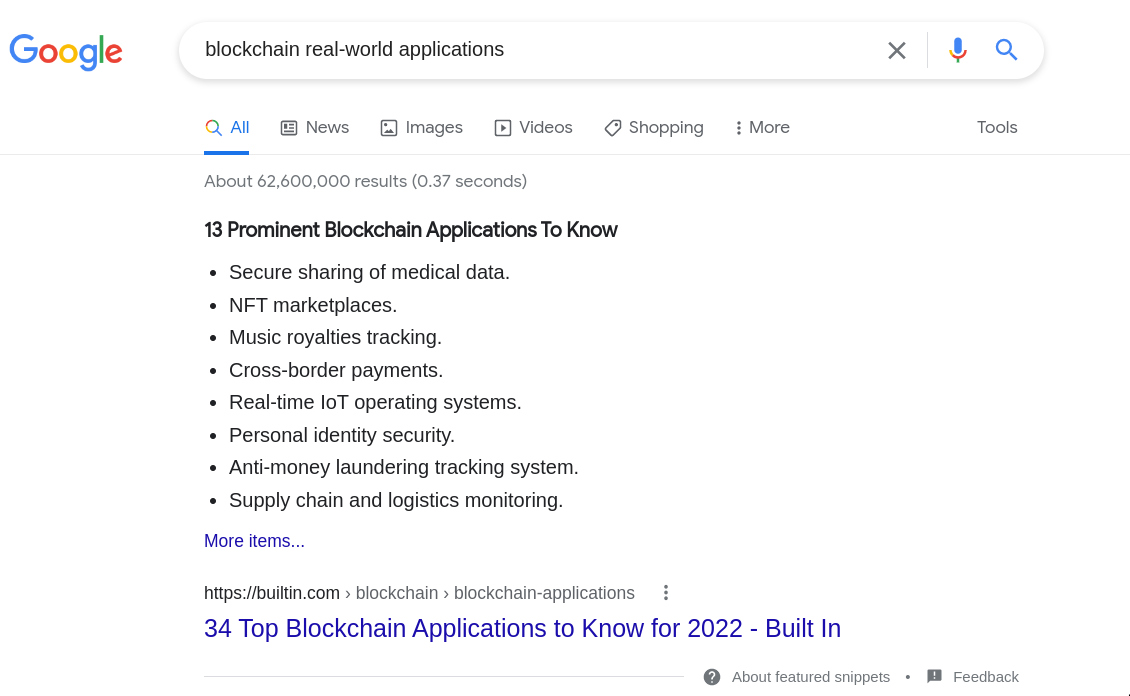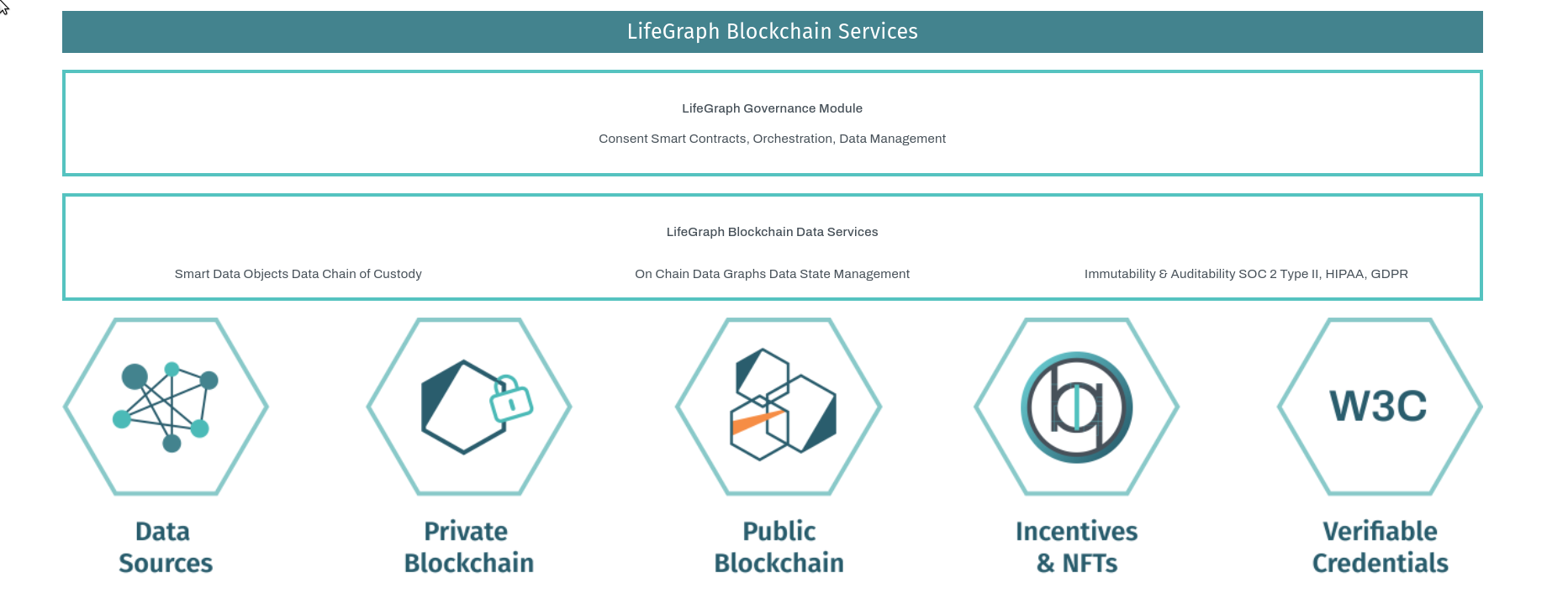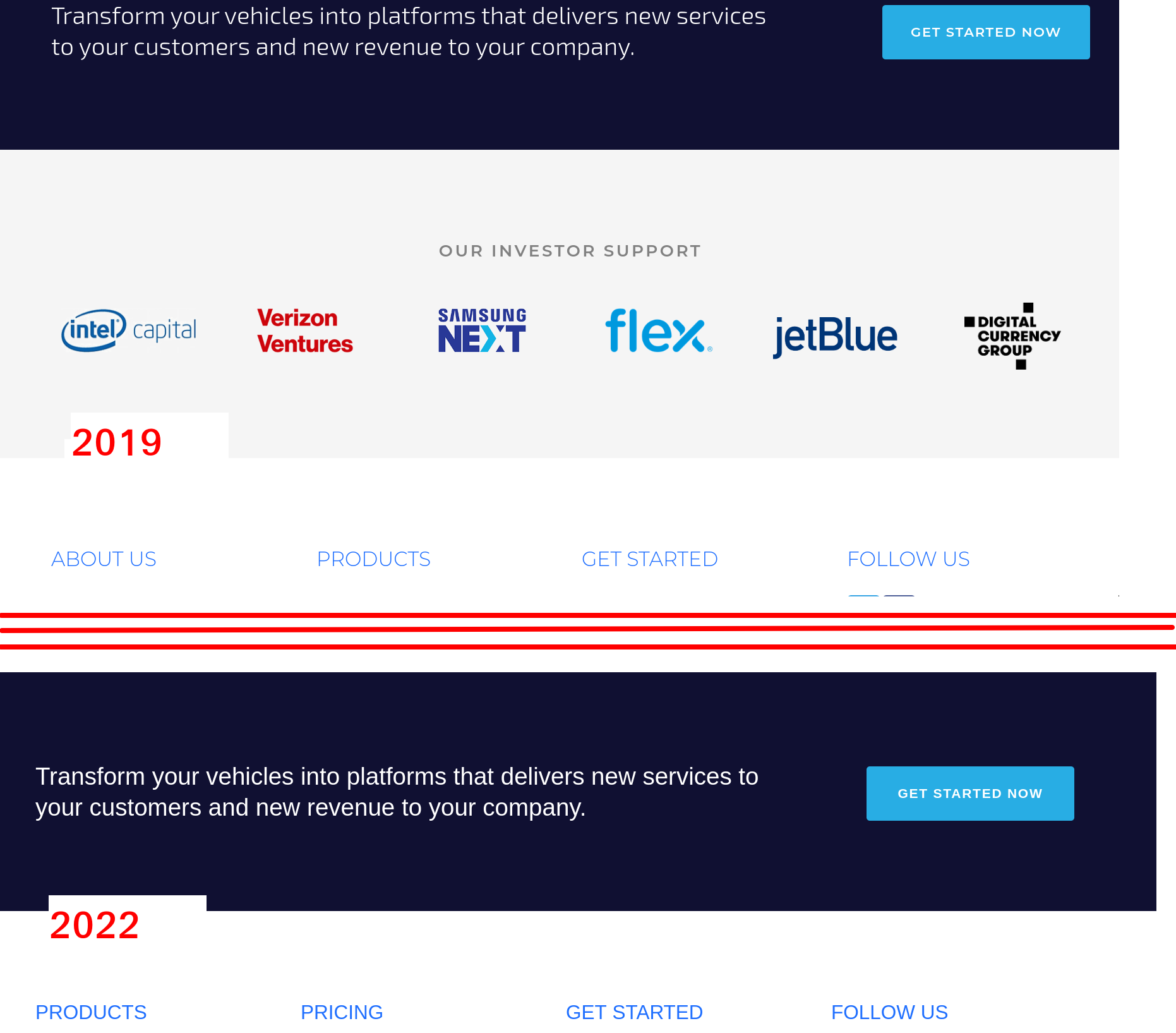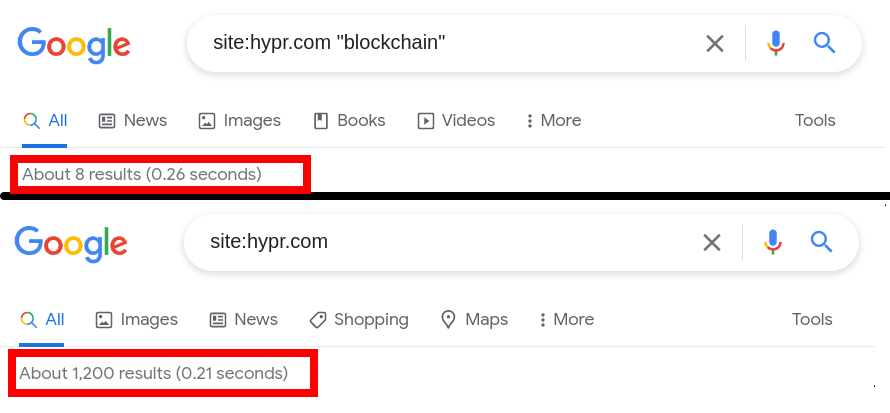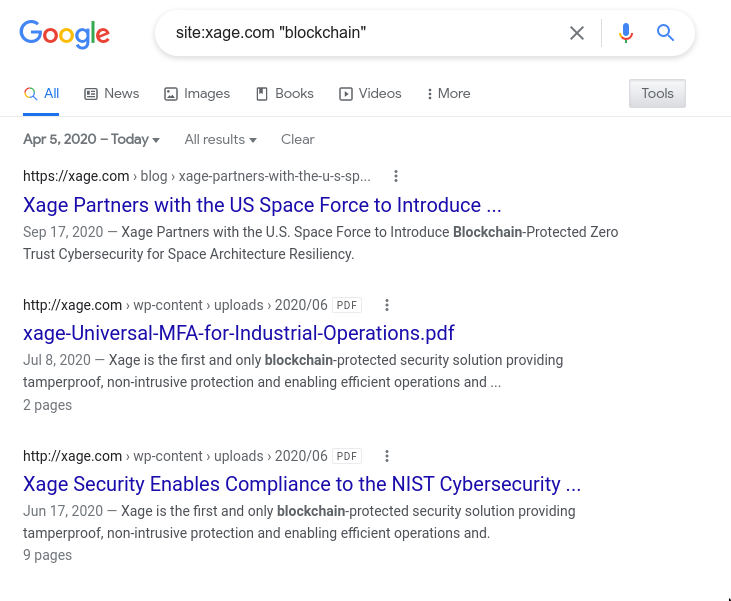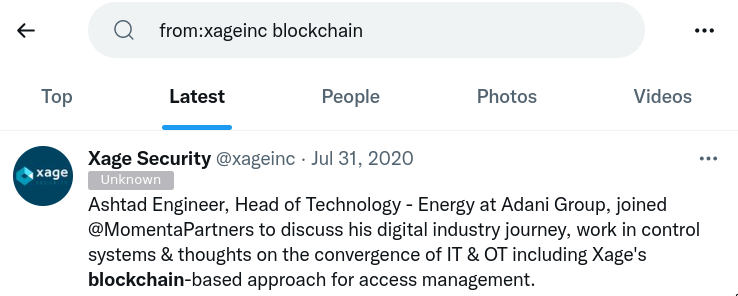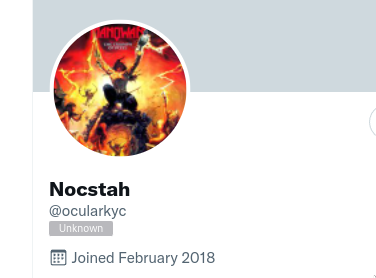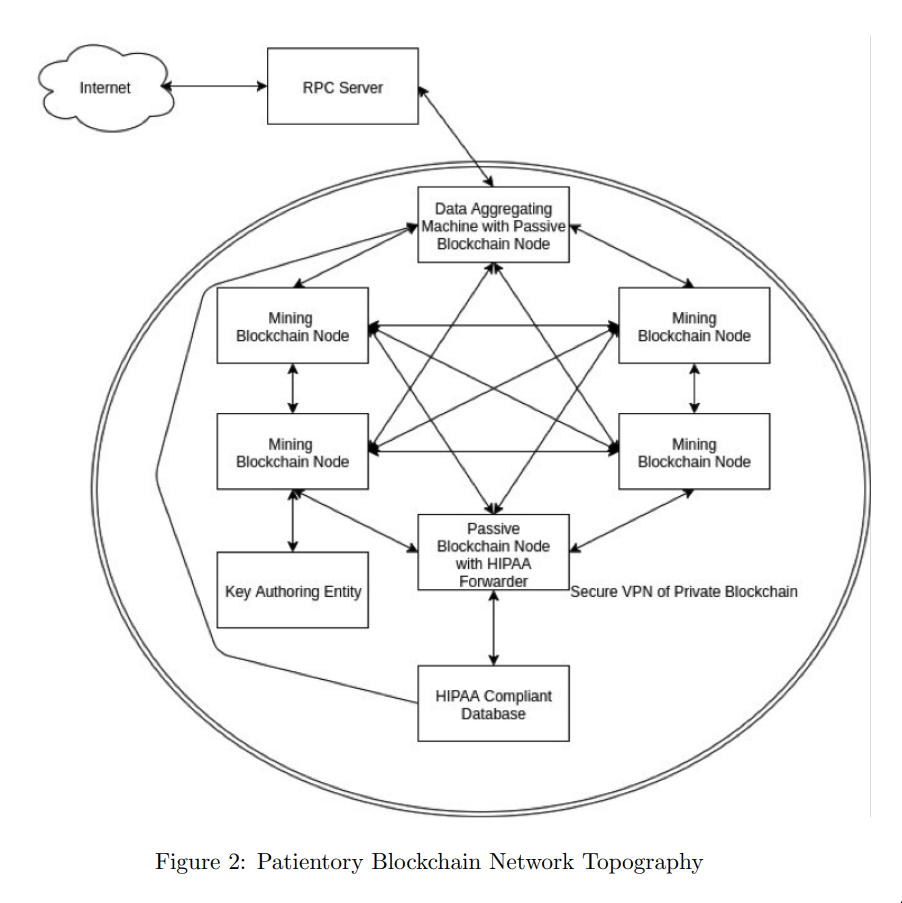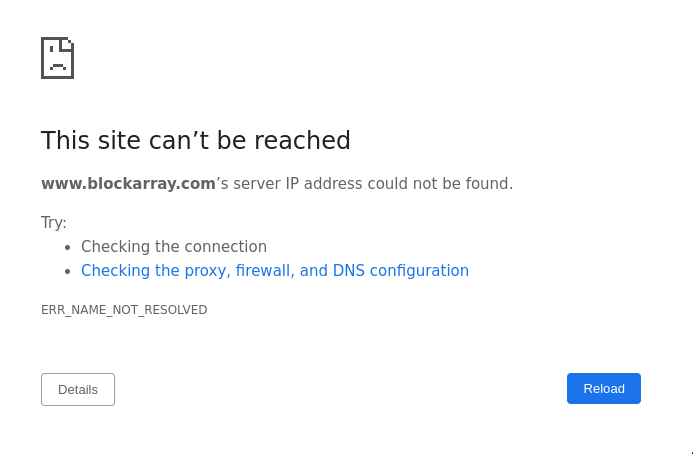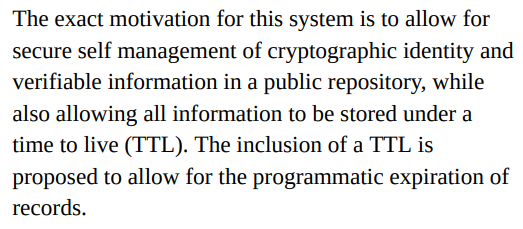I Looked Into 34 Top Real-World Blockchain Projects So You Don’t Have To
TL;DR: The top #1 Google result for “blockchain production users” (and related queries) lists 34 individual “real world blockchain” projects. One would expect some actual functioning projects that have an impact on every-day consumers — outside of cryptocurrency & NFTs. Looking into all 34, I found that 13 are already dead (including one that has been killed by the SEC), 6 are only useful within the crypto & NFT ecosystems and not in the “real world” and 14 use Blockchain in a way where removing the blockchain would not impact functionality at all, or make the product better. The remaining project is Chainalysis, which has real-world impact by helping law enforcement de-anonymizing blockchain users.
- Overview and Scope
- The Dead, the Bad & the Ugly
- Not The Real World
- And The Winner Is…
- Closing Words
Overview and Scope
If you ask people without, or with limited background in tech about Blockchain (or Distributed Ledger Technology, “DLT”), the general understanding is that, even though the Cryptocurrency and NFT ecosystem is plagued by scams, Blockchain is the ‘Future of IT’. Deloitte compares it to the arrival of the postal services or the internet. “Forget Bitcoin: Blockchain is the Future” blogs Investopedia, “How Blockchain will change [everything]” writes Nasdaq. Even within the IT industry, plenty of people bought the hype:
“Blockchain will be as important to the next generation of internet applications as the public cloud, microservice architectures, and devops are to the current generation” [infoworld]
“Blockchain is ideal for delivering that information because it provides immediate, shared and completely transparent information stored on an immutable ledger that can be accessed only by permissioned network members.” [IBM]
But while the 13 years of blockchain’s existence certainly had no shortage of prototypes, promises and PR, outside of cryptocurrencies, darknet markets and money laundering use cases, it is hard to find news articles or an overview about real-world use cases of Blockchain technology. So I decided to dig myself.
The top search result for “blockchain real-world applications” on Google is this builtin.com article, titled “34 Blockchain Applications and Real-World Use Cases Disrupting the Status Quo“ (archived version). Quote:
We’ve rounded up 34 examples of real-world blockchain use cases for this pragmatic yet revolutionary technology. It’s far from an exhaustive list, but they’re already changing how we do business.
Apart from being the top #1 result, and a reasonably recent article, Builtin.com has 300+ employees (per linkedin), and is a company built around the tech startup community. Part of their business seems to be maintaining a database of startup companies, including the ones mentioned in the Blockchain article — so they have some business incentive for the data to be accurate.
Additionally, the majority of the following results did not list actual projects or products, but rather high-level ideas like “Supply chain management”, “Healthcare”, “Food Safety” etc. — usually with a 2-3 sentence high-level description, but no concrete examples1.
So I figured the Builtin list would be a good starting point to find & check out some real-world use cases.
For the purposes of this article, I am making the assumptions that the projects should be
- Not just crypto: As the point of this article is to find applications outside of cryptocurrency, I’m categorically excluding anything where the only effect of the application is in the user’s cryptocurrency wallet.
- Not Dead: Projects should have had a sign of life in the last ~12 months or so.
- Not Bad: Uses Blockchain, and in a way that makes sense
- They do use a Blockchain/DLT, and
- The DLT adds some form of value to the users, and
- The value add comes at reasonable tradeoffs: the product is still somewhat usable and does not cause (obvious) legal problems.
It turns out, these are sufficient to cross out 33 of the 34 projects from the list. I have listed those in the next section, in the order in which they appear in the original article.
The Dead, the Bad & the Ugly
Smart Contract Use Cases
Smart Contracts as a concept have their own set of problems, but luckily that doesn’t affect any of the projects Builtin listed in this category — because none seem to use them.
BurstIQ: Not Blockchain, Bad Blockchain, Prototype
Bad use of Blockchain, unfinished Prototype, and likely does not use DLT at all. The website is full of marketing buzzwords, and apparently they seem to have pivoted back and forth to IoT at some stage, and now to web3. Completely lacking is any technical description on how the system works, beyond a few high-level buzzword-filled boxes.
Their careers page mentions blockchain only in passing, nothing blockchain-related in the skills/qualifications sections for any engineering role — AWS & SQL everywhere, though.
The word “blockchain” appears only twice in their whitepaper, both times in the last sentence:
“The BurstIQ platform connects any data from any source in a global network of businesses, researchers and people, through a full end-to-end blockchain enablement system with blockchain-based big data management, consent and data sharing, cognitive computing, monetization and global data exchange.”.
This is also the only sentence describing the platform’s functionality in the whole whitepaper.
There is a “Tell me more” link to sign up for a 60-day free trial for BurstIQ. The link doesn’t work.
Mediachain: Dead
Dead: Acquired by Spotify in 2017. Website and Twitter last updated then. There has been no mention of any progress on Mediachain’s core proposition within Spotify ever since. In 2022 though, Spotify is recruiting people to work on early-stage Web3 projects — they are starting another prototype.
Propy Inc: Bad
In 5 years, they seem to have sold only 2 properties: One in Kyiv (2017) and one in Tampa, FL (2022). The article is somewhat ambiguous what rights you own with the NFT — it’s either “access to the paperwork” or some “ownership rights”. I reached out to Propy and asked what happens when you lose your keys. The answer was, in effect, “we’ll give you new login information”(!). In other words, you don’t actually own or manage the NFT, Propy does. All the advantages you are supposed to get with NFTs, access to the DeFi ecosystem for example, or easier transfers, obviously can’t happen in this case. What happens if Propy runs out of funding and shuts down? Do you still own your house? All Blockchain does here is muddy the waters w.r.t. legal responsibilities & adding more complexity to the purchase process.
Whereas earlier this year, “NFT” was all over their homepage, as of mid 2022, they seem to be pivoting away from NFTs — they seem to be focusing on being a real estate sales management platform, maybe a title and escrow company, neither of which has anything to do with blockchain; they also seem to be taking zillow (or similar) listings and offering to pay for the listings with cryptocurrency — which, in essence, makes them an exchange.
Internet of Things
The Blockchain is supposed to secure “everything from an Amazon Alexa to a smart thermostat.” by it’s “transparency and virtual incorruptibility”. This did not make sense to me in the first place, and apparently it did not make sense to Builtin’s featured projects either.
Filament: Dead
According to their website, they have pivoted to automotive. Their LinkedIn and Twitter have both been dead for 2+ years, and the only change their website has seen since 2019 is that the series A investors (Verizon Ventures, Bullpen Capital) have pulled out..
HYPR: Not Blockchain
The Builtin article claims that HYPR makes “IoT devices virtually unhackable” by “By taking passwords off a centralized server”. It is hard to find any references to IoT on their website, their Blog barely mentions IoT anymore — in fact, since Jan 2020, only one articlementions it — in passing.
Searching their website for “blockchain” yields only 8 results(of over a thousand pages). All of these are either only tangentially related “encyclopedia” articles, and/or updated 2017 or earlier. There is no indication that HYPR has used anything blockchain related for at least 4 years.
Xage Security: Not Blockchain
Not DLT: Last mention of “blockchain” on their site in September 2020. A partnership with the US Space Force, no less.
Similarly, their Twitter account — which tweets daily –- has last mentioned “blockchain” in July 2020.
They seem to be pivoting to “zero-trust”, away from blockchain. In fact that’s in the title of the main whitepapers at the time of writing, whereas any mention of Blockchain is completely absent.
Trying to access the actual whitepapers requires you to provide an abnormal amount of personal data — not a good look for a security-focused company to harvest PII. Most of the documents can be found with a filetype google search — also not a good look if it’s that easy to bypass their “security”.
Still, after downloading and going through the whitepapers, it remains fundamentally unclear what they were actually trying to do with their blockchain system — even high level information like “what kind of data is stored on the blockchain” is completely absent. . They keep talking about Xage being tamper-proof due to blockchain in virtually every document they reference blockchain in. This is plainly false, Blockchains are tamper-evident and maybe tamper-resistant, but not tamper-proof2. Bad start.
The little information that is available raises way more questions than it answers. In their NIST Cybersecurity compliance analysis doc, they claim that their encryption scheme somewhat benefits from blockchain. There’s two, and both are messy:
-
Data stored in Xage Fabric is encrypted on a per publisher and subscriber basis end-to-end.
If all data between all participants on the network is end-to-end encrypted with per-channel keys, how exactly do you get a readable presentation in the audit log? Are the keys centrally managed? Clearly this encryption scheme is orthogonal to any blockchain use, but since we are using blockchain: What happens if the key material of one node gets compromised and you need to rotate the keys, how are you going to re-encrypt past entries without breaking the blockchain/merkle-tree?
-
Data stored in the Xage Fabric is encrypted using a threshold based encryption technique called Shamir Secret Sharing.
Compromises on Fabric will require simultaneous access to multiple (threshold) Xage Fabric nodes to provide their shares making data leaks substantially more difficult compared to central databases and not exploitable.
This makes no sense to me, whatsoever. The only interpretation that I can get out of this is that the data at rest (on disk) is encrypted with a secret-sharing scheme, and that each blockchain node holds a chunk of the key. You’d need M-out-of-N chunks to decrypt the data.
That sounds nice for 5 seconds, until you realize that there must be mechanisms for participants to read the data — for which the participant has a valid reason to contact those M nodes. At that point the participants obtain the “*simultaneous access” *to the key material. The encryption scheme offers protection only when some (less than M) database nodes are compromised, but not against compromise of any of the other (e.g. desktops, IoT) devices in the network.
Assuming this system makes sense, it can just as well be implemented without a blockchain, but with a central database and separated keyservers. It can be reasonably assumed that this would actually be more secure: Separating Database and Keyservers would mean that there is fewer software running on each node, which would mean fewer security concerns; and the key server code could be much smaller (compared to a node also containing the blockchain and database logic) and can be audited better.
Personal Identity
It should go without saying that putting anything ID-related on a public ledger is a privacy and GDPR nightmare3. I have talked extensively about the combination of DID and Blockchain in my previous article, which contains even more dead projects.
Ligero: Dead
The company was founded in 2018. Their website has no information on the platform, or on any activity. There doesn’t seem to be a twitter or a company Linkedin profile. I was unable to find the CEO on LinkedIn, the CTO has no mention of Ligero in their LinkedIn profile, and neither does the company president.
Illinois Blockchain: Dead
The “Final Report” was published to their website in 2018, and the “Illinois Department of Innovation & Technology” twitter account has not mentioned Blockchain since 2019
Civic: Bad
Doesn’t use DLT at all: This company provides ID verification and MFA login services, specifically targeted at blockchain and NFT companies — they don’t sell a product that utilizes blockchain itself.
Evernym: Bad
While the whitepaper from 2016 talk about a distributed ledger, none of the two casestudies talk about their use of blockchain — in fact, the infographic in the former makes it pretty explicit that no blockchain is involved. The second one seems to use the same on-phone storage for credentials, without blockchain. I have discussed Sovrin, which is the creator of Evernym, in my previous article — I reached out to them, and apparently, for a single project, they write to a private Hyperledger instance — but their client doesn’t read from it. They did not clarify why that hyperledger is even there. They did mention that they are exploring non-blockchain solutions.
Ocular: Dead
The website ends with the registration form for the affiliate partnership program, which has the note “Please note this is in early beta stages and estimated to start high volume testing early September 2019.” The copyright is from 2020. There are no technical specs whatsoever. The Twitter account @ocularkyc has a Manowar profile picture, and limits its post to central-bank conspiracy theories.
Healthcare
As with identity, what was really missing from the healthcare system is that all that privacy sensitive data is on a publicly accessible ledger.
WholeCare: Bad, Likely Dead
There is virtually no information at all on their website. The most detailed technical facts are
“Resources to orient new caregivers”, “HIPAA-compliant record keeping”, “Integrated scheduling tools & alerts”, “Cross-device compatibility”.
That’s it.
There is no mention of blockchain or DLT on their website. Their twitter account retweets a WaPo article every few months.
Patientory: Bad, Likely Dead
The app seems to mainly be focused on tracking exercise, water, body photos — nothing that fitbit & co can’t do today. Hardly “requires blockchain”. There is some talk about storing patient data in the PTOY Blockchain (which seems to be the token associated with the chain). https://ptoy.org/ There’s a Whitepaper from 2017, which shows a wonderfully centralized architecture:
This graph could be stripped down to 3 nodes, with the same exact functionality, but less complex, cheaper, and more performant. It even explicitly says that all the storage work is done by a “HIPAA Compliant Database”, so blockchain doesn’t add anything here.
This is a classic 2017 ICO boom project that somehow manages to still occasionally write tweets.
Bonus: The “App Store” and “Play Store” links actually lead to a “subscribe” page, not an app store page. I doubt that is in compliance with Apple’s and Google’s respective policies. For example, the play store guidelines state: “Any online use of the badge must link to the Google Play store.“ The badge images are also clearly altered, prohibited by both Apple and Google’s TOS.
Pretty obvious trademark infringement on your homepage, for a company in a compliance-heavy industry – that bodes well.
Nebula Genomics: Bad
This company claims to allow people to buy their DNA sequencing kit anonymously via bitcoin. Which makes these pop-ups particularly fun:
Of course, the checkout process does not accept crypto at all.

There is some whitepaper that claims they can store and share genomics data in a privacy-preserving way. https://www.biorxiv.org/content/10.1101/799999v1. As dumb as the idea is in general, the whitepaper at least seems somewhat technically interesting. But that doesn’t really matter, because the data is sequenced in Hong Kong, or “in Europe”, so who knows who has copies of your data. And even if nobody stored the data: “However, under certain circumstances your genetic information may be subject to processing pursuant to laws, regulations or judicial or governmental orders, warrants or subpoenas. “ — in other words, whatever technical locks they have in place, Nebula has a master key. (Wikipedia)
Medicalchain: Dead
The Whitepaper is from 2018, the roadmap ends in 2021Q1. Their Twitter has been dead since March ‘21.
Logistics
Are logistics companies, and the businesses they work with, interested in broadcasting their business activity to their competitors — by putting reports, receipts & manifests on a public ledger?
… Let’s find out.
DHL: Dead
Dead and/or never left prototype phase: The last press release is from 2019, about a MvP they tested with Hewlett-Packard Enterprise. There is no technical description, no details, no further updates. They did provide an overview PR document, and it’s an entertaining read, especially section 2 ”Blockchain Examples across the Industry”: Every single example is “experimenting with”, has “built a prototype” or is “testing”. None deployed a prod product.
The exception is Powerledger where they claim to have deployed the product — but spot-checking a few of their 30 clients, all of those are either small-scale deployments (e.g. prototypes w/ 30 kWh) or in planning/prototyping stage.
Powerledger is an interesting one though, as it mixes both a fake blockchain approach (Per the whitepaper: private blockchain in section 5.3, off-chain channels in section 5.4, and an off-chain trading engine in section 5.5.) with what looks like a 2017 “ICO scam” ($POWR) — to build an energy market, which already has working real-world non-blockchain implementations.
Hewlett-Packard Enterprise’s Blockchain Solutions page has issued their last “News” in 2018.
Block Array: Dead
The link on the Builtin.com article links directly to their Facebook page, which hasn’t been updated since March 2018. Their actual website (blockarray.com) is gone.
Maersk: BadDead
Updated 2023-01-13: Maersk announced that they will be shutting down Tradelens in early 2023, as “need for full global industry collaboration has not been achieved”.
Bad DLT: I actually spent a serious amount of time looking at Maersk — this is a platform that actually seems to work, is used by customers, and they seem to be using a Hyperledger internally.
The problem arises when you look at what that blockchain actually does. Virtually every component in the system is gated by an IBM.com login, there are multiple disconnected blockchains with nodes operated by only a few participants, nodes can only be accessed through APIs hosted by IBM (ACL’d off, of course), data is (by necessity — GDPR) mutable, and not all data is shared by all participants.
The blockchain only seems to be used to store hashes, which you (if you have access) can then compare against a separately stored document (if you have it). This does, of course, not preclude existence of other, conflicting documents in the blockchain, nor does anything really stop the few node operators to collude and re-write history — for which there might be legal reasons, like GDPR, which one node might not even be at liberty to disclose to other parties.
In essence, this is a working system, with a blockchain slapped on the side for PR reasons. Blockchain integration probably does not make the system (much) worse – especially given that it seems to affect only a tiny part of a (presumably) massively complex shipping management system.
But it doesn’t add value either: At the end of the day, “trust in the data” is established through the IBM logo on the login screen4, not through the blockchain.
ShipChain: Extra Dead
Extra dead: https://web.archive.org/web/20210619020901/https://shipchain.io/settle.html
In the offer of settlement, ShipChain, Inc. offered, among other things, its payment to the SEC of $2,050,000 […] Unfortunately, ShipChain, Inc. is now without sufficient resources to continue its business. Consequently, ShipChain, Inc. has made the difficult decision to cease operations and is now in the process of closing its affairs.
It should be noted that this was in 2020, and it’s still listed when google searching for “blockchain production users”
Government
This is a category where, at least in theory, you’d expect the ‘everything is public’ aspect of the blockchain might add some transparency use cases. Unfortunately, in the projects listed, it doesn’t.
Voatz: Very, Very Bad
Bad DLT: Now, e-voting is obviously a really bad idea (EFF has tons of material,OpenPrivacy on Swiss elections ‘19, CCC on Germany 2020). There’s a principle in democracies that every person needs to be able to understand how the result was calculated, and why it is anonymous and secure. With that, I invite you to read the “Technology” on Wikipedia, in particular:
“The blockchain infrastructure of Voatz includes 32 identically arranged verifying servers that are distributed across Amazon’s AWS and Microsoft’s Azure.[16] Each server runs an identical copy of Hyperledger, an open source blockchain software.[17]
Once a user downloads the Voatz app, they verify their phone number, provide a photo ID, as well as a “selfie”. Facial recognition and voter rolls are used to verify identity and confirm a match between the picture and ID submitted. After the user is offered a secure token (activated through the use of a fingerprint) applicable to eligible elections, the user’s biometric information is removed from the Voatz system.[18] After all votes are submitted to Voatz, votes are printed on a paper ballot and fed into a machine.”
Also, the intro and “Security Assessment” and “FBI Investigation” sections are entertaining.
Now with that out of the way,
- Voatz uses paper ballots as the source of truth. The votes are apparently printed out, fed into a machine, where they are then counted. Why is there a blockchain system in the middle, at all?
- Voatz uses a replicated, permissioned hyperledger which (apparently) can only be accessed through their APIs. How does blockchain provide auditability here? So what exactly does the blockchain do here again?
A 2020 security review by researchers at MIT came to a similar conclusion:
We further find […] that the system’s use of the blockchain is unlikely to protect against server-side attacks (§5.2).
The whole article, but in particular Section 1, is downright scary. Particularly worth pointing out is that Voatz refuses to give a detailed description of how their election system works, citing IP concerns5. So much for the whole idea of “transparency”.
David Gerard has covered Voatz extensively.
State of Delaware: Dead
Dead: Via technically:
It’s been four years since that episode, and while corporations have the state’s authorization to use blockchain for record keeping, it’s unknown how many Delaware corporations are using it for stock ledgers.[…]
Technical.ly has reached out to the governor’s office and several individuals directly involved with the evolution of the initiative and has not yet received a response. It’s also unclear what came of the Symbiont proof-of-concept.
Follow My Vote: Very Bad, Almost Dead
Dead (-ish): Founded 2012. Virtually every article covering this project (from their ‘press’ section) was written in 2017 or earlier. Their Twitter account has not posted this year.
This seems to be mostly equivalent to Voatz, with the same privacy & security problems of the “one blockchain transaction per vote” approach. Sure, you may need to hop on a VPN, that you paid for anonymously, and you need to make sure that there’s no CCTV cameras watching you vote – otherwise people, corporations or governments could de-anonymize your vote. Small price to pay for a blockchain based system.
As with Voatz, there is basically no technical documentation. They have an infographic
on how their cryptographic process works. Can an average person
understand how this is secure & privacy-preserving? 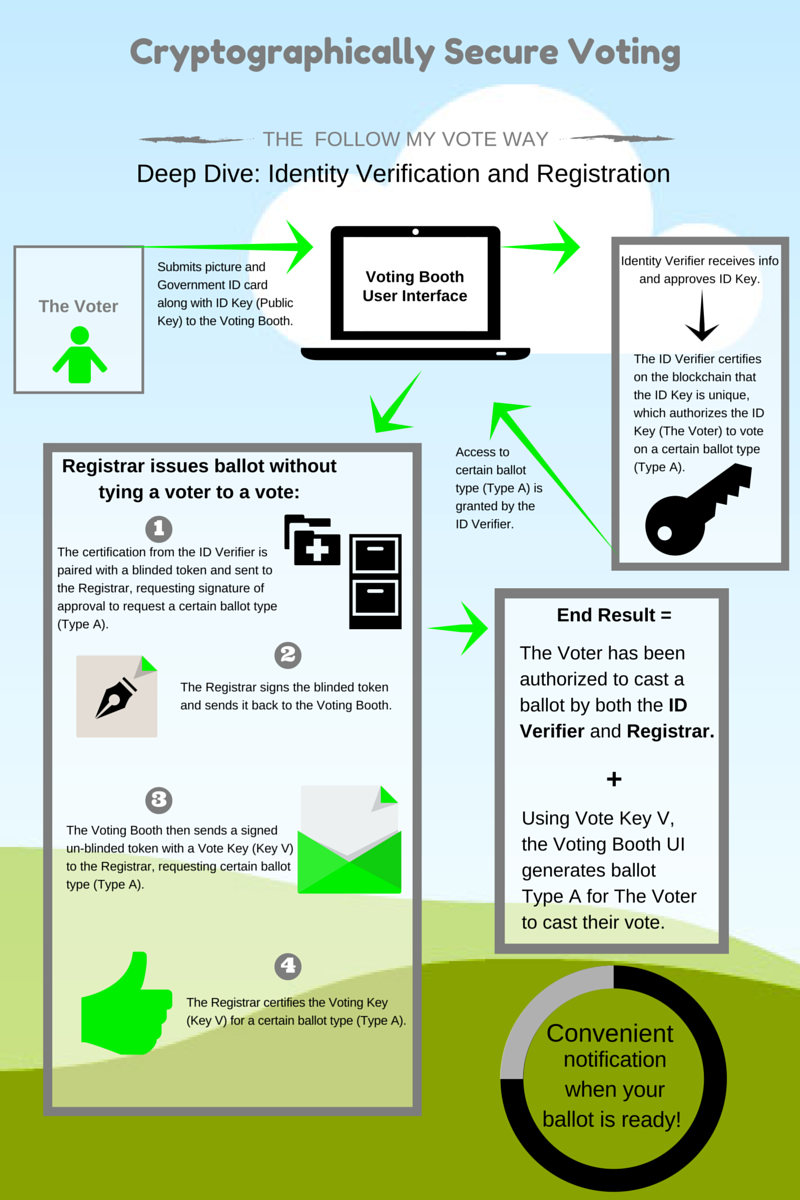
In early 2021, they apparently scrapped the approach they have been working on, to build a new fundamental platform called “Pollaris”. A year later, they uploaded one commit to Github. There has been no activity since, nor was I able to find any documentation on this system. It is unclear whether the posts above refer to the pre-Pollaris, or the post-Pollaris system (but then again, it wouldn’t really matter either way).
Media
Per builtin:
“Blockchain’s strength in the media industry is its ability to prevent a digital asset, such as an mp3 file, from existing in multiple places”.
Wait what
MadHive: Bad & Mostly Dead.
The company’s core business (Adtech) actually looks alive — but not the Blockchain part. With the sparse information available, it looks like they had two previous attempts to do ‘something with blockchain’, AdLedger and MadNetwork.
The last post on AdLedgers’sMedium page is from 2019, so that’s almost certainly dead. The whitepaper assumes a permissioned Ethereum blockchain:
They do explain why this is required:
But they do not explain why using an immutable ledger, when you need to be able to delete, makes sense.
They then talk about the need for “real time updates”, without the need of a “blacklist”, and somehow the “distributed state machine” of a blockchain is a way to achieve that. They don’t actually explain why.
The other DLT attempt seems to have been a thing called “MadNetwork”.
“MadProduction’s MadNetwork will allow for the mining of MadBytes and minting of MadTokens which need to be managed through an accessible user interface.”.
The above quote is from a job posting that exited when I started researching for this article, but has since been pulled (cached version).
Assuming that this is the same as https://www.madnetwork.com/, their last big update — still featured prominently at the top of the page — is from 2020, announcing that they are working on a prototype with Verizon.
There is no indication that “MadNetwork” is anywhere close to even being in a prototype stage. It is unclear even whether this is supposed to be a distributed PKI, or a fraud-detection network for adtech. MadHive’s own “resources” section only lists documents from 2019.
Steem: Dead & Bad
Steem.it is a reddit-ish social media platform. It is very close to dead these days: Per dapp radar, its usage has dropped from 33k users / day to about 35, making this project 99.9% dead. Justin Sun took over the chain, and the community left for a project called Hive.io.
However, if you do consider the few remaining users as a “real world use case” (or include Hive), there’s plenty of bad DLT to go through here, too.
The big and obvious problem is how an “uncensorable” platform would deal with illegal content (CSAM is the obvious example). The answer is apparently: they don’t, they can’t, they just hope nobody will ever upload anything illegal.GDPR is of course a problem too. Steemit responds to legal requests by censoring the content in the app, apparently hoping that nobody will look into the Steem block-explorer — where the content remains. Social Media on Blockchain creates a worst of both worlds situation: You need a content moderation team, just like existing social media platforms — but they can’t actually delete the content form the database, so node operators are still broadcasting it.
SteemIt also has all the classic cryptocurrency traits: a history of stealing funds through soft & hard forks, threats of class-action lawsuits, hacks, and the earning model being a pyramid scheme (with the twist that early investors make money not only from later investors, but also from creators).
A similar project DTube, which is a youtube-esque social media platform, requires you to refresh the IPFS cache every few days to keep your videos alive: https://hive.blog/witness-update/@quochuy/your-previous-d-tube-videos-don-t-play-anymore-how-to-prevent-this-from-happening-again-without-technical-skills
Reddit exists, micropayments in social media have been tried over and over again before DLTs came around (Flattr,Google Contributor). Steemit does censorship internally, thus the key argument for “uncensorable posts and transactions” is not valid. Blockchain has no reason to be integrated here, and makes things worse.
Open Music Initiative: Dead
Dead: Last blog posts in 2018, most about hackathons, conference attendance, no actual products. Seemed to have tweeted about industry-related things until October 2020, and only tweeted twice since.
Not The Real World
Money Transfer Use Cases
Money transfer use-cases would fall directly in the category of “crypto-only”. For as long as Bitcoin has existed, this has been touted as a great use-case — but it never really materialized.
Chain.io: Not Blockchain
According to the Builtin article, Chain.io’s “cryptographic ledgers help financial institutions safely and efficiently handle the transfer of cryptocurrencies.” There is no mention of this on their homepage. It looks like they have now completely pivoted from being a blockchain-financials company to being a logistics-on-cloud platform. Their careers page summarizes their company as
Chain.io is a cloud based integrations platform that connects partners across the global supply chain.
The last mention of DLT in their blog is from 2018.
Algorand, Gemini & Circle: Crypto only
Not real-world projects. As discussed in the introduction, I am only discussing projects that have real-world effects outside of cryptocurrency balances. Gemini, Circle as exchanges, and Algorand as a Blockchain implementation, don’t qualify here – they don’t actually add real-world utility other than moving tokens around.
NFTs
Candy, Pixura, Dapper Labs [not real world, bad dlt]
As a whole, NFTs violate both the “real world” requirement, but they are also a really bad engineering solution for the “non fungibility”
In particular — see the Propy use-case above — when real-world ownership law meets stolen or lost keys, real-world wins. This also seems to be the case with the copyright law & Seth Green’s stolen ape — a stolen NFT is unlikely to give you rights. Ownership does, but that is not the same as possession. So the “NFTness” of the Ape doesn’t add any better management or transferability of ownership, the exact opposite is the case: it muddies the waters, adds another layer of complexity.
But not only are there complications unifying “ownership” with the real world and the crypto world; even within crypto “uniqueness” (and thus the “ownership over the thing”) is far from guaranteed.
- If Ethereum forks (again), each NFT would be duplicated, and can be sold individually on each chain. Of course, OpenSea might just declare one of the two forks the canonical one, but other platforms might disagree. From a purely technical (“code is law”) perspective, both forks are equally valid.
- It is of course possible to just clone the whole contract and plug the same images (or URIs) in. This exists as a service, e.g. with CloneMyNFT.com (“which allows you to keep a copy of your NFT in your wallet even after selling the original”),
- It is of course also possible to just clone the NFT on a completely separate blockchain, like Candy does — they run on a DLT called Palm, which uses “proof of authority (PoA) consensus, with network validators being run by key stakeholders” — in other words, it’s completely centralized, and if the key stakeholders decide to take your ape, or a majority loses interest and shut down the chain, your stuff is gone and you can’t get it back — except with a hard fork, see problem (1.).
“Just as in the traditional art market, NFTs can be faked through Mimics. And just like in traditional art markets, this fact challenges users to take responsibility for tracing the provenance of what they’re buying. Identifying vulnerabilities is how infrastructure is strengthened.”
So, how does this improve on things then?
More generally, through labeling which NFT collection’s hash is the “true” BAYC, which fork of the blockchain is the “true” ETH fork, which collections can even be displayed and traded — OpenSea & co are the true gatekeepers and de-facto owners. If they want your ape to be gone, they can pull the plug. So again, you’re left with a central instance virtually controlling your apes, so the NFTs add practically nothing to the real world, other than a (very expensive) layer of indirection.
So I will be excluding this category as a whole, Candy & Dapper Labs are just generic NFT companies. Pixura deserves honorable mention for the phrase “[Pixura] helps non-technical users to create, track and exchange NFTs” — because what we really needed was to make it easier to create useless tokens.
And The Winner Is…
Chainalysis helps the government track down tax evasion,darknet markets and CSAM providers & consumers. You can make an argument that they fundamentally require cryptocurrencies to work, but the impact they are having extends far outside the crypto ecosystem into branches of law and tax enforcement.
They also provide mechanisms to automatically block transactions:
Use KYT to detect patterns of high risk activity and prevent transactions with addresses identified on OFAC’s sanction list, freeze deposits from hacks or ransomware, screen ETH accounts, and more
It is certainly ironic: The only live real-world Blockchain use case in this list, is an application that de-anonymizes and censors transactions in the context of ‘uncensorable’ & ‘anonymous’ cryptocurrencies.
Closing Words
There have been overly hyped tech products before — Cloud, Machine Learning, Internet — where people promised more than what the product actually delivered. But these products clearly delivered something. This is not the case with Blockchain technology.
The statements “Blockchain is the Future” and the more moderate “there are use-cases for Blockchain outside of cryptocurrency” seem to always fall apart when you look at any proposed use-case from an engineering, privacy and legal perspective.
Blockchain advocates have been spending 13 years convincing people of those statements, could they not have spent an hour or two to find facts to back them up?
Given how many investors and members of the general public lose time and money on this, I believe it is somewhat irresponsible that the software engineering community is not pushing back harder. As a member of this community, I also find it somewhat embarrassing.
-
In fact, the only other comparable list I could find was this one. Spot-checking some of the entries, it seems to suffer from exactly the same problems as the Builtin list. ↩
-
A tamper-proof system would be one where you could not, in any way, change the bytes. But that’s clearly false here, you can simply go into the underlying storage engine — for example, PostgreSQL or RocksDB for Hyperledger Iroha — and change the values there. Arguably, given that this is a private blockchain that has no external parties verifying the blocks, it would be hard to even call a private blockchain tamper-resistant. ↩
-
GDPRs right to erasure applies to pseudonymous data, too. Pseudonymous data is anything that can be linked to a single individual by someone who has additional data. There is good reason to believe that this includes even (hashed) public keys, i.e. bitcoin addresses, as well as transactions between them. As far as i know, this hasn’t been tested in court, because nobody has sued — yet. ↩
-
and a good old-fashioned centrally managed HTTPS connection ↩
-
In fact, large chunks of Voatz attempt to address the researchers’ criticismis based on the argument “We’re not telling anyone how our voting infrastructure works, so how could they possibly know. The remaining arguments are a mix of “oh we have fixed this a looong time ago, no we’re not going to tell you when that was” and inadvertently admitting that the situation is even worse — in Section 2.4, trying to address the fact that biometric information is sent to a third party, they admit that that data is additionally transmitted to Voatz for manual inspection. ↩
